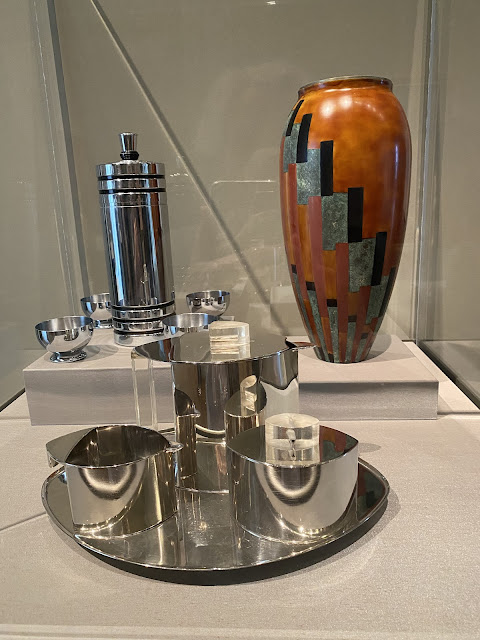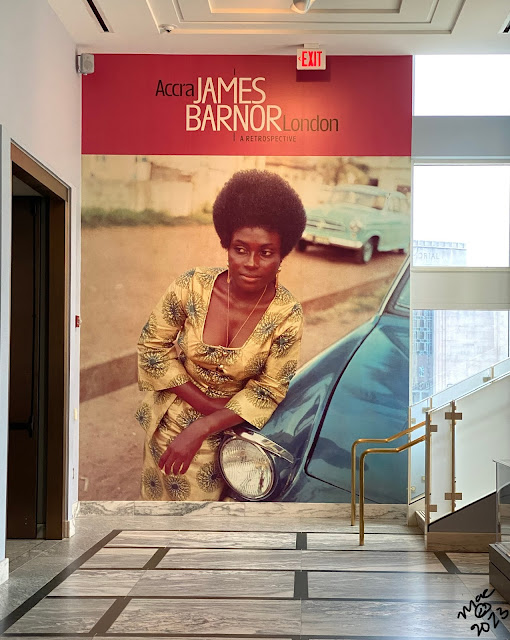In July of 2018, I wrote a blog post titled “What I dream of when I dream of Paris.” Now, after another month participating in the blog event titled Paris in July, I would like to revisit that topic, and add some further thoughts to that post. I’ve been back to Paris once since then in November of 2018 — like everyone in the world, I’ve had my travel dreams disrupted by the pandemic and its aftermath, so I haven’t had a chance to visit there recently.
 |
The back of Notre Dame Cathedral. The photo was taken in 2014, but this must have been my first look
at Paris from the back of our motor scooter. |
Paris has been my dream city for many years, since the first time that I saw it. I was on the back of the Lambretta motor scooter on which we were wandering around Europe in the 1960s. The scooter wasn't safe on big roads (I have no idea if the REALLY big autoroutes had even been constructed back that far in time). So we came in through a series of rather run-down neighborhoods full of not very interesting post-war buildings. Until suddenly we were scooting alongside the river and coming right up to the back of Notre Dame de Paris. I was breathless! (Breathless: a perfectly-named movie about Paris from a few years earlier, 1960.) We found a very cheap hotel on the Quai de la Tournelle which directly faced Notre Dame.
 |
I dream of the Cluny Museum as it was for many years, and of the new and expanded interior
and presentation as we saw it in 2018. |
 |
| From our favorite Unicorn Tapestry at Cluny. |
One of the first museums we went to was the Cluny Museum, to see the Unicorn Tapestries, which I'd been reading about for years. Breathless! We've gone back to Cluny on every Paris trip, except when it was under construction.
We mostly ate meals in student restaurants because Len had been enrolled in the University of Grenoble, and we had special cards that entitled us to this privilege. But we had received a wedding gift of a 100 franc note, which we used for one real high-end meal at a serious restaurant. I wish I recalled what we ate, but all I remember was that it was amazingly delicious, and we were surprised that the waiters and so on treated us as honored guests, not as the poorly dressed student wanderers that we were.
In 1976, we spent most of a year in Paris, living in a very small apartment on Boulevard de Grenelle. Our balcony looked out at the elevated metro train -- noisy! especially when a terrible heat wave hit the city in late May. The famous Poilâne bakery was across the street.
The sidewalk in front of the bakery could be seen from our balcony, though the facade was mostly hidden behind the metro. Sometimes we could see a long line of people waiting to buy the famous bread. And early in the morning, we could watch the deliveries of cords of wood to the cellar door that gaped in the middle of the sidewalk. Poilâne was famous for its wood-baked bread, and the ovens were in the cellars where the wood was being delivered. In the photo from inside the bakery, taken in 1976, you can see the elevated metro and dimly make out our building across the street.
We ate Poilâne's bread often, as well as the fantastic croissants, apple turnovers, rolls, and other Poilâne products that can be seen in the photo. Recently, we have been enjoying a new cookbook by the current owner of this famous bakery.
Under the elevated tracks facing our building, city workers constructed the temporary stalls for an open-air market on Sunday and another day, maybe Tuesday: a good place to buy produce to prepare in our tiny kitchen. Right around the corner from us was a wonderful shopping street: Rue de Lourmel. I remember specialists in fresh fish who would tell me how to cook what I bought, specialists in exotic fruit and vegetables, and especially an amazing cheese shop called Cantin. This original Cantin shop doesn't seem to be on Rue de Lourmel any more, though there's another Cantin owned by the daughter of the original owner.
 |
| The memorial at the Vélodrome d'Hiver (Wikipedia). |
Sadly, there is another landmark on Boulevard de Grenelle in the other direction, beyond the huge concrete building where we lived that year. This is the site of the Vélodrome d'Hiver, or indoor bicycle racing arena, which was torn down in approximately 1959, and replaced by other huge middle-class apartment buildings in solid concrete. The Vel d'Hiv is mainly remembered in history as the site of a huge round-up of the Jews of Paris in July of 1942. Something like 13,000 people, including 4000 children, were herded into the arena without food, water, or sanitation, and held for days before being shipped off to Auschwitz. I often walked past the monument and thought about this collective horror. Depressingly, the signs commemorating the past were often defaced by right-wing fanatics, but at the time I thought they were special to France. Now I'm thinking again of those families torn apart forever in 1942, and putting it together with what's happening to many innocent immigrant families in our own country -- in 2023. This is not a dream of Paris, but a nightmare.
 |
| Place Dauphine in 1615. A very historic location! (Wikipedia). |
We've also made many shorter visits to Paris. I recall a specific day when I was alone because Len had to fly back on a different plane. I had lunch alone at a restaurant near the historic center of Paris on the Ile de la Cité in Place Dauphine. This is quite near the office of Inspector Maigret, where he sometimes has his lunch. Yes, I know he was fictitious, but for me he's a real Parisian. I was seated at a table with another tourist, a German woman, and had a very interesting conversation in French, our mutual language, about what we liked about Paris. I don't know why it was memorable! But it was.
On both long trips and many short ones, I searched for hours in a quest to collect Mona Lisa parodies, which I've posted on this and other blogs many times. I looked in antique shops, bouquinistes (that is, those book stalls along the Seine), specialists in old paper, and modern card shops. Sometimes I found a few wonderful items, sometimes not. But it's always good to have an obscure goal that takes one out of the tourist routine!
In 1976, I also followed the guidance of a book that a friend gave me. Its title was
Paris Inconnu, and it described the history of very old and deteriorating buildings throughout Paris. This book is now very obsolete because most of these buildings have since then been restored and serve as museums or high-end office space or apartments worth millions of euros. The Picasso museum and the Jewish museum of Paris are both in such restored buildings. I'm amused to recall how I peeked into slummy courtyards to look for Renaissance archways and stone carvings visible behind rows of garbage cans and parked bicycles.

Another friend that year introduced me to a book titled
Paris pas Cher, which explained how to find bargains. She was especially fond of one recommended store that had mid-level designer clothing and other not-quite-high-end clothing in rejected lots from the manufacturers -- who still made clothing in Paris then. Dresses, blouses, and kids' clothing, particularly by design house Cacharel, were often sold with the center of the label cut out (or in French,
dégriffé) so that a person who knew labels could recognize it, but so it was clearly designated second-quality. We found quite a few nice things shopping there. (The edition that I still have is from the next long stay in Paris, as shown.)
 |
| A favorite restaurant just around the corner from our 1989 apartment. |
 |
| Paris, Len's campus workplace at Place Jussieu (Wikipedia). |
I'll just mention that in 1989, we spent a full year living not far from the same place, in a relatively unpleasant apartment on the ground floor of an otherwise nice building next to a very nice little restaurant where we ate often. As in 1976, Len was visiting at the University of Paris in the ugliest complex of buildings we've ever seen. But it was a wonderful year with more visits to great restaurants and fabulous museums, discoveries of food, wine bars, art, books, and a growing familiarity with subway stations and obscure neighborhoods. Above all, during each stay in Paris we enjoyed the company of many Parisian friends and many visitors who also appreciated Paris.
 |
| Picasso’s portrait of Gertrude Stein |
On our most recent trips to Paris, we have stayed in a hotel in the area around Montparnasse, near the huge skyscraper (which made the Parisians vow never to allow another towering building in the center). It’s an amusing neighborhood, and a wonderful walk towards the Latin Quarter and many of the museums and other attractions. Each time we walked that way, we stopped at the house where Gertrude Stein and Alice B. Toklas lived in the first half of the 20th century. Their influence on American ex-pats is renowned,. This had special resonance with me because in high school, I did. a term project on Gertrude Stein, and her work helped me create an early vision (or dream) of Paris.
Well, that's my wrap-up of memories of Paris, particularly the small things rather than the ones that get on everyone's list. You know the list. You can find it in any guidebook: the Louvre and the Mona Lisa, the Eiffel Tower, Impressionist museums, a walk on the Champs Élysée, a dinner cruise on the Seine in one of the famous bâteaux-mouches. In fact, we've never done a dinner cruise on the Seine, just watched the brightly lit boats go by as darkness fell and the lights of Paris came on. In that first hotel when we stayed on the quai, spotlights from the passing boats would shine into our eyes when we were trying to sleep.
I'm sure I've written down some of these thoughts before, though not recently. Paris in July is a great idea! And I thank
Emma at Words and Peace for organizing many bloggers for this year’s blog event.
Blog post © 2018, 2023 by mae sander




















































